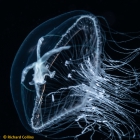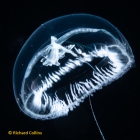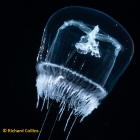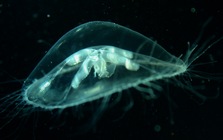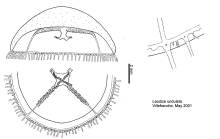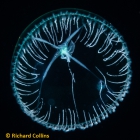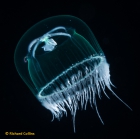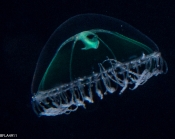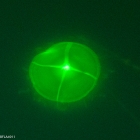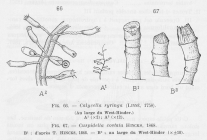WoRMS taxon details
Laodicea Lesson, 1843
117141 (urn:lsid:marinespecies.org:taxname:117141)
accepted
Genus
Medusa crucigera Gmelin, 1788 accepted as Laodicea undulata (Forbes & Goodsir, 1853) (type by monotypy)
Laodice Lesson, 1843 · unaccepted (invalid non-latin name)
Octorhopalon von Lendenfeld, 1885 · unaccepted (synonym)
- Species Laodicea brevigona Allwein, 1967
- Species Laodicea fertilis (Lendenfeld, 1885)
- Species Laodicea fijiana Agassiz & Mayer, 1899
- Species Laodicea indica Browne, 1905
- Species Laodicea marama Agassiz & Mayer, 1899
- Species Laodicea minuscula Vannucci, 1957
- Species Laodicea pulchra Browne, 1902
- Species Laodicea undulata (Forbes & Goodsir, 1853)
- Species Laodicea antarctica (Browne, 1907) accepted as Ptychogena antarctica Browne, 1907
- Species Laodicea bigelowi Neppi & Stiasny, 1911 accepted as Laodicea undulata (Forbes & Goodsir, 1853) (synonym)
- Species Laodicea calcarata L. Agassiz, 1862 accepted as Laodicea undulata (Forbes & Goodsir, 1853) (possible synonym)
- Species Laodicea cellularia A. Agassiz in L. Agassiz, 1862 accepted as Earleria cellularia (A. Agassiz, 1862) accepted as Mitrocoma cellularia (Agassiz, 1862) (basionym)
- Species Laodicea cruciata (Forsskål, 1775) accepted as Laodicea undulata (Forbes & Goodsir, 1853) (indeterminate species, likely synonym)
- Species Laodicea ulothrix Haeckel, 1879 accepted as Laodicea undulata (Forbes & Goodsir, 1853) (synonym)
- Species Laodicea chapmani Günther, 1903 (uncertain > taxon inquirendum)
- Species Laodicea eucope (Haeckel, 1879) (uncertain > taxon inquirendum)
- Species Laodicea neptuna Mayer, 1900 (uncertain > taxon inquirendum)
- Species Laodicea ocellata Babnik, 1948 (uncertain > taxon inquirendum)
marine, brackish, fresh, terrestrial
recent only
Lesson, R. P. 1843. Histoire naturelle des zoophytes. Acalèphes. Librairie Encyclopédique de Roret, Paris. pp. i-vii, 1-596, plus atlas of 12 pls., available online at https://www.biodiversitylibrary.org/page/3803187
page(s): 294 [details]
page(s): 294 [details]
Schuchert, P.; Choong, H.; Galea, H.; Hoeksema, B.; Lindsay, D.; Manko, M.; Pica, D. (2025). World Hydrozoa Database. Laodicea Lesson, 1843. Accessed through: World Register of Marine Species at: https://www.marinespecies.org/aphia.php?p=taxdetails&id=117141 on 2025-07-15
Date
action
by
![]() The webpage text is licensed under a Creative Commons
Attribution 4.0 License
The webpage text is licensed under a Creative Commons
Attribution 4.0 License
Nomenclature
original description
Lesson, R. P. 1843. Histoire naturelle des zoophytes. Acalèphes. Librairie Encyclopédique de Roret, Paris. pp. i-vii, 1-596, plus atlas of 12 pls., available online at https://www.biodiversitylibrary.org/page/3803187
page(s): 294 [details]
original description (of Octorhopalon von Lendenfeld, 1885) von Lendenfeld, R. (1885b). Addenda to the the Australian Hydromedusae. <em>Proceedings of the Linnean Society of New South Wales.</em> 9: 908-924, 984-985, pls 40-43., available online at https://www.biodiversitylibrary.org/page/25527732
page(s): 919 [details]
basis of record van der Land, J.; Vervoort, W.; Cairns, S.D.; Schuchert, P. (2001). Hydrozoa, <B><I>in</I></B>: Costello, M.J. <i>et al.</i> (Ed.) (2001). <i>European register of marine species: a check-list of the marine species in Europe and a bibliography of guides to their identification. Collection Patrimoines Naturels,</i> 50: pp. 112-120 (look up in IMIS) [details]
page(s): 294 [details]
original description (of Octorhopalon von Lendenfeld, 1885) von Lendenfeld, R. (1885b). Addenda to the the Australian Hydromedusae. <em>Proceedings of the Linnean Society of New South Wales.</em> 9: 908-924, 984-985, pls 40-43., available online at https://www.biodiversitylibrary.org/page/25527732
page(s): 919 [details]
basis of record van der Land, J.; Vervoort, W.; Cairns, S.D.; Schuchert, P. (2001). Hydrozoa, <B><I>in</I></B>: Costello, M.J. <i>et al.</i> (Ed.) (2001). <i>European register of marine species: a check-list of the marine species in Europe and a bibliography of guides to their identification. Collection Patrimoines Naturels,</i> 50: pp. 112-120 (look up in IMIS) [details]
Other
context source (Hexacorallia)
Fautin, Daphne G. (2013). Hexacorallians of the World. (look up in IMIS) [details]
additional source Bouillon, J.; Boero, F. (2000). Synopsis of the families and genera of the Hydromedusae of the world, with a list of the worldwide species. <i>Thalassia Salent. 24</i>: 47-296 (look up in IMIS) [details]
additional source Bouillon, J.; Boero, F. (2000). Synopsis of the families and genera of the Hydromedusae of the world, with a list of the worldwide species. <i>Thalassia Salent. 24</i>: 47-296 (look up in IMIS) [details]
 Present
Present  Inaccurate
Inaccurate  Introduced: alien
Introduced: alien  Containing type locality
Containing type locality
From editor or global species database
Diagnosis Laodiceidae medusae with small manubrium, sometimes with small perradial lobes; with four radial canals, simple or with short lateral diverticula; with simple undulated gonads; with or without marginal cirri; with or without adaxial ocelli. Hydroid colony stolonal, hydrotheca sessile, tubular, turning gradually into a pyramidal operculum formed by numerous converging flaps, with visible crease-line basally; hydrotheca often with transversal growth-rings, sometimes with basal constriction at origin, or exceptionally a poorly delimited pedicel; hydranth without intertentacular web, tentacles amphicoronate; gonotheca like hydrotheca but larger. [details]
| Language | Name | |
|---|---|---|
| Japanese | ヤワラクラゲ属 | [details] |
